Dam destruction to create expanded habitat for rare Alabama fish
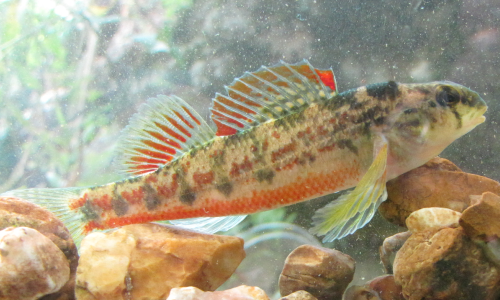
For nearly a century, a small dam on Turkey Creek in Jefferson County has threatened the survival of a tiny fish found nowhere else in the world. But after years of planning, the dam is about to come down – which will help expand the limited habitat of the vermilion darter and improve water quality for nearby communities.
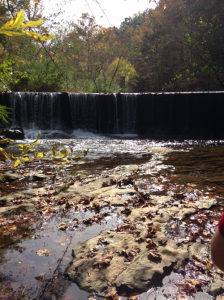 After the dam is removed, the site will be restored to its natural condition, extending by a half-mile the darter’s range. The project is being coordinated by the nonprofit Freshwater Land Trust, along with the U.S. Fish and Wildlife Service and support from multiple public and private partners, including Alabama Power.
After the dam is removed, the site will be restored to its natural condition, extending by a half-mile the darter’s range. The project is being coordinated by the nonprofit Freshwater Land Trust, along with the U.S. Fish and Wildlife Service and support from multiple public and private partners, including Alabama Power.
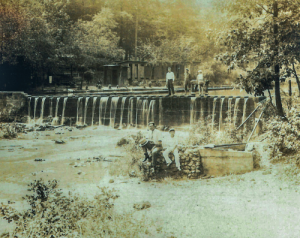
Dorothy Kewish ca. 1928
The 85-foot-wide, poured concrete dam was built in the early 1920s to create a commercial fishing and swimming hole. But years ago the swimming hole filled with sediment, and now the aging dam is both an environmental problem and a safety hazard.
Not only does the dam restrict and threaten the viability of the vermilion darter – a tiny, brilliantly colored fish that is on the federal endangered species list – it also hampers upstream migration for several other aquatic species, including snails and mollusks.
Eric Spadgenske, with the Fish and Wildlife Service, said the project’s impact goes beyond protecting and expanding habitat for important species. He said it will also help improve the quality of water in the creek, which is used by people across the county for recreation, as well as for water treatment purposes. “The fish are an indicator of the quality of the water. This is about protecting water for people.”
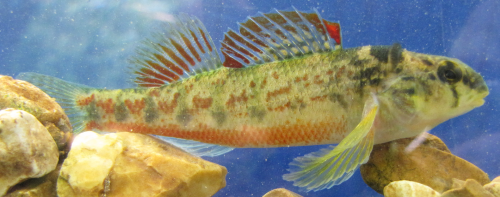
photo by Eric Spadgenske
Spadgenske praised the diverse partnership that has come together to help fund the project. Alabama Power and parent Southern Company are helping support restoration of the natural creek banks, once the dam is removed. That portion of the project is being funded through the Five Star Restoration Program, which involves multiple partners, including Alabama Power, Southern Company, the nonprofit National Fish and Wildlife Foundation, and the U.S. Environmental Protection Agency.
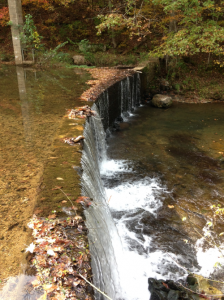 Charles Webster, mayor of the nearby city of Clay, was among the multiple government officials who recently visited the dam site, right before deconstruction was set to begin. Clay is among the municipalities supporting the project, along with nearby Pinson, home to the Turkey Creek Nature Preserve, an important recreational and education asset for the region.
Charles Webster, mayor of the nearby city of Clay, was among the multiple government officials who recently visited the dam site, right before deconstruction was set to begin. Clay is among the municipalities supporting the project, along with nearby Pinson, home to the Turkey Creek Nature Preserve, an important recreational and education asset for the region.
Webster, too, praised the partnership and Alabama Power’s involvement. He said the city recently annexed land near the dam, which could potentially be joined with the already-protected property that surrounds the dam. He envisions eventually connecting the sites with walking trails. “I’m really excited about it,” he said.
The dam is expected to be removed before late November, after some preliminary work is completed at the site. Updates on the project will be posted on the Freshwater Land Trust’s Facebook page and on Twitter, with the hashtag “#freethevermiliondarter”.
To learn more about Alabama Power’s efforts to protect the environment, click “Environment” at the top of this page.
Facts about the Turkey Creek Dam Removal
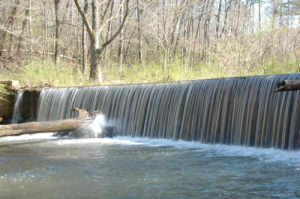
Photo by Zac Napier
- The poured concrete dam (6 feet tall, 85 feet wide, about 20 inches thick) was built in the early 1920s to make a fishing and swimming hole
- According to the U.S. Fish and Wildlife Service, it is one of the five impoundments along Turkey and Dry Creeks that constitute a threat to the endangered vermilion darter
- Removing the dam will reopen a half mile of habitat for the darter and other aquatic species
- The dam will be taken down slowly over the course of a week using a hydrologic hammer. Action Environmental, a partner in the project, is removing the dam at a highly discounted price
- The National Fish and Wildlife Foundation, with support from Alabama Power and other partners, will fund restoration, including using debris from the dam to stabilize the newly formed creek banks and replanting native vegetation
Facts about the Vermillion Darter
- The vermilion darter (Etheostoma chermocki) is known to have lived only in a 7.2 mile mainstream segment of Turkey Creek and in two adjacent tributaries near Pinson in northern Jefferson County
- In 2001 the U. S. Fish and Wildlife Service listed the fish as endangered, and the Alabama Department of Conservation and Natural Resources has designated the species as Priority 1 (highest level of conservation concern) due to its extremely limited number and distribution and its susceptibility to impacts from nonpoint sources of pollution
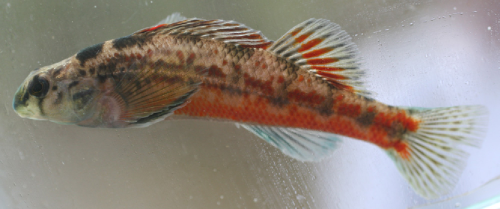
Male darter downstream of dam (by Bernard R Kuhajda)





